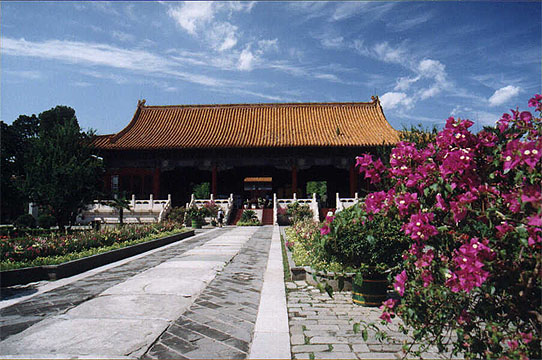 |
 |
|
Ming Tombs The story of the Ming Dynasty (1368-1644) is typical of the Shakespearean plays (Well, Shakespeare wasn't born until 1564). The first Ming emperor established his capital in Nan Jing. His oldest son died early so his grandson succeed his throne. However, his fourth son, who was guarding Bei Jing, ousted the second emperor and became the third emperor, Yong Le. Emperor Yong Le choose Bei Jing as the nation's capital. He subsequently built the Forbidden City and chose his tomb near Bei Jing. For the next twelve successors, they all chose their tombs there. Thirteen out of the sixteen emperors were buried there, except the first two and the last one. The Chinese translation for the Ming Tombs is "the Thirteen Tombs". This is Ling En Gate.
BEGIN NEXT |